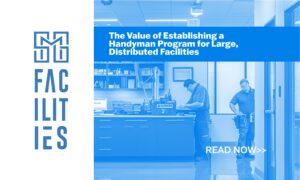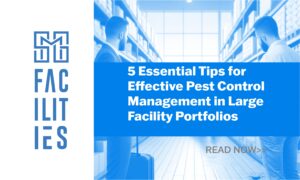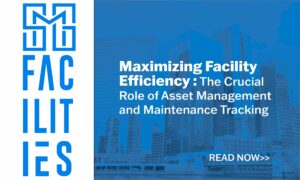For facilities management budget planning, leaders must balance several items. To execute a successful year, managers need to plan out a thorough budget. This includes using data and technology to forecast throughout the year. In addition to forecasting, managers must keep an eye on their inventory and materials because operational costs do not come cheap. As well as these figures, management must keep labor and hiring costs in mind as they plan out their year. Planning a meticulous budget will keep costs low, keep the business running successfully, and mitigate the pain of unexpected expenses that could increase the risk of commercial property damage.
1. Plan for a Facility Management Budget and Make Repairs as Needed
The best practice for owners and managers to try and save the most money throughout the year is to monitor each aspect of the business and plan. Facilities management budget planning allows management to be proactive with planning and less reactive with maintenance. Stopping for each request, large or small, can keep managers and teams from doing what they need to for the facility. Without strategizing for a budget, the total cost of ownership (TCO) can increase exponentially. Essentially, monitor each aspect of the distributed portfolio and take each little thing into account. Little things add up to be big things, and a repair that may cost $50 now may turn into a $1000 fix later. By being laser-focused on those critical areas which you can proactively control, you will set yourself up for greater success and better align with the company’s overall strategy of controlling costs.
2. Leverage Technology and Data to Determine Forecasts
One of the best tools owners or managers can invest in include computerized maintenance management systems, space management software and other collaborative technology. With automated systems, “actionable” data can become readily available for all team members across all levels. Not only does this software allow for managers to keep up with the organizational needs of managing assets, but it also helps forecast the facility management budget and encourages proactive maintenance of facilities. Budget templates are readily available for those who may need assistance as well. Because managing a budget often requires the consumption of a large amount of data, utilizing that data from automated systems in a way that makes it “actionable” is the most effective way to implement effective strategies that benefit the enterprise.
3. Monitor Inventory and Materials
Another area of a financial budget that may not come to mind immediately: inventory and materials or facility asset management. Keeping up with these components of the business does make up a good portion of the costs. Many of these issues come down to the industry standard. A good rule of thumb would be to monitor these and ensure they meet the standard or fall below. Keeping a close eye on equipment and other in-house materials needs to be integrated into the budget as they will not last forever. The TCO (Total Cost of Ownership) of a business depends on the balancing act within facility management budget planning.
4. Consider Costs of Hiring and Labor
One of the highest costs for companies, in general, are hiring and labor costs. Determining overhead costs means monitoring labor and formulating how much it will cost to operate daily. These overhead expenses include the cost to hire someone, training, regular pay, overtime pay, benefits, or any other incentive the business offers their employees. The more employees, the higher this cost is for facility management services, so decreasing other expenses will help offset the cost of labor.
5. Allow for Wiggle Room for Unforeseen Circumstances
Another facilities management budget example lies within the incidents that management does not plan for. Equipment that breaks down, damages to a facility’s exterior, and many other things that may go wrong can break even the most well-thought-out budget. As reiterated by FacilitiesNet, these are specific issues that managers must budget for through the year and lean on when planning for future projects.
Learn how The Facility Manager’s Guide to Finance & Budgeting Can Help You Today
Ultimately, the best thing for the team means planning for the unforeseen and using the best, most accurate data for forecasting. As the world approaches peak season, costs will rise, meaning management must account for these monumental changes or try to. The only proper way to do so is by consulting the professionals at SMG Facility Services to help plan your budget today.





